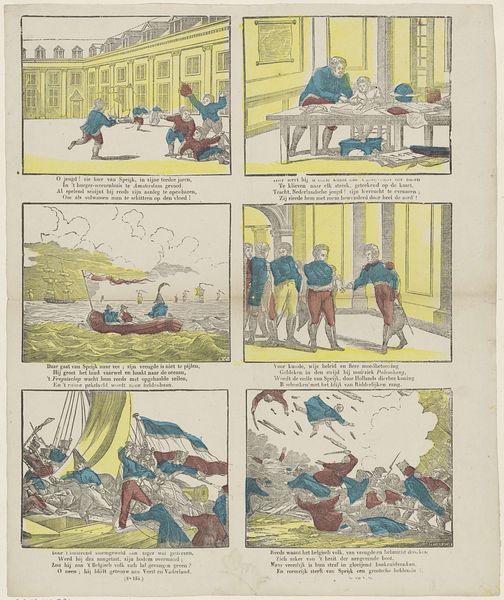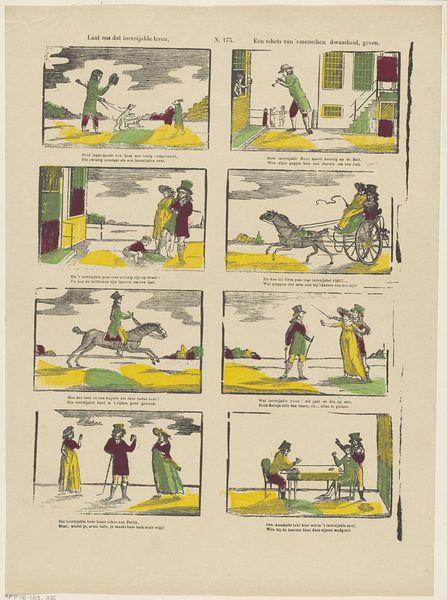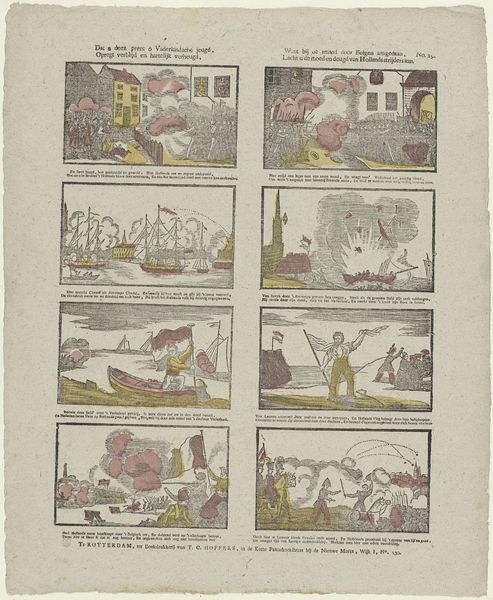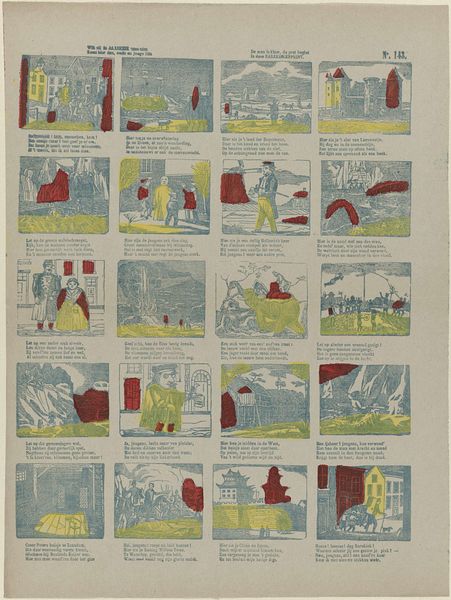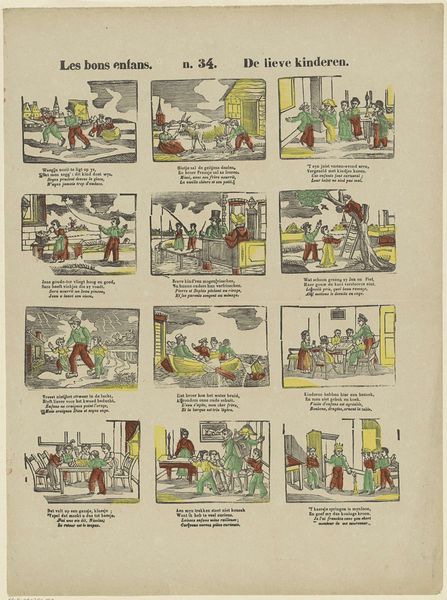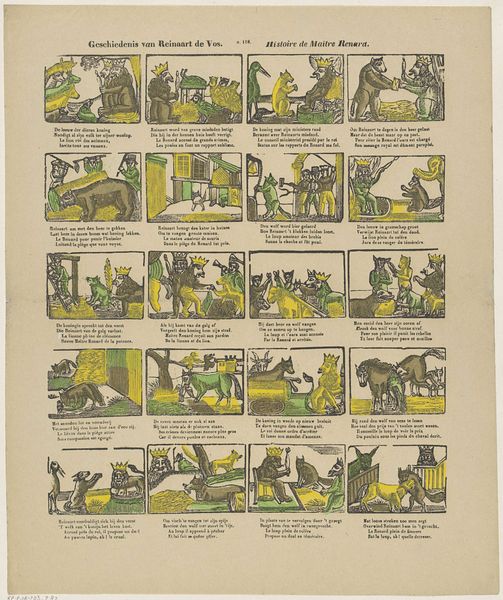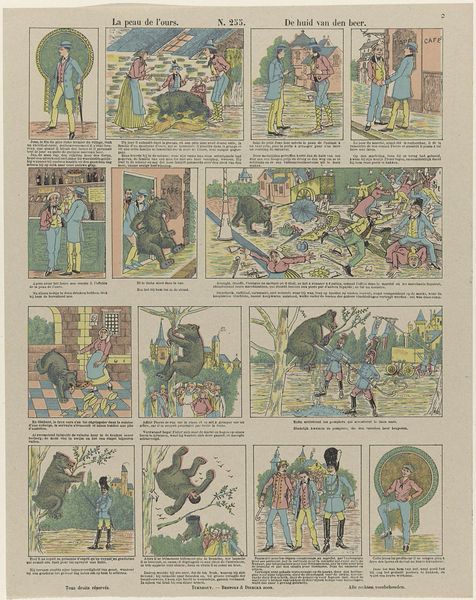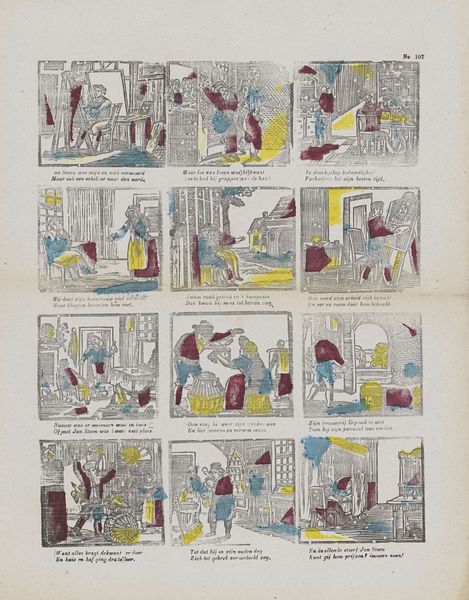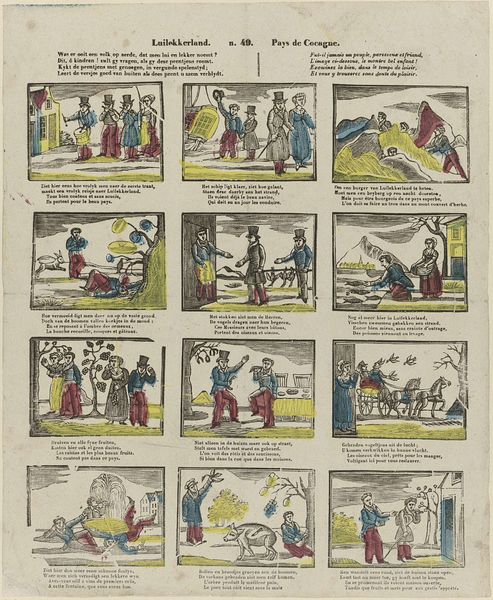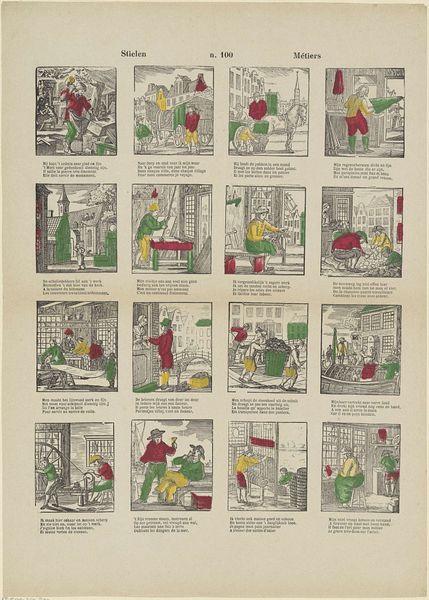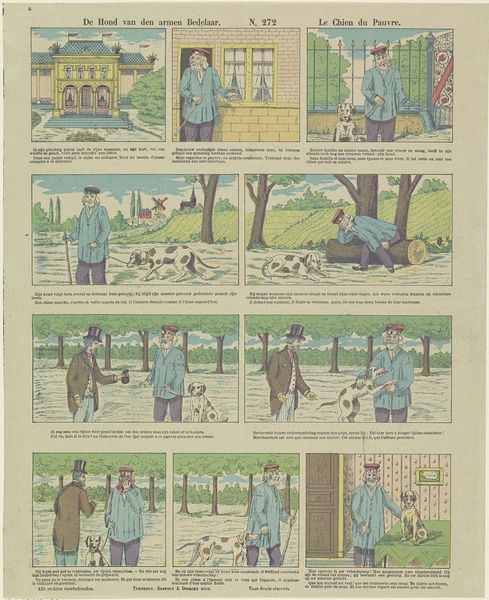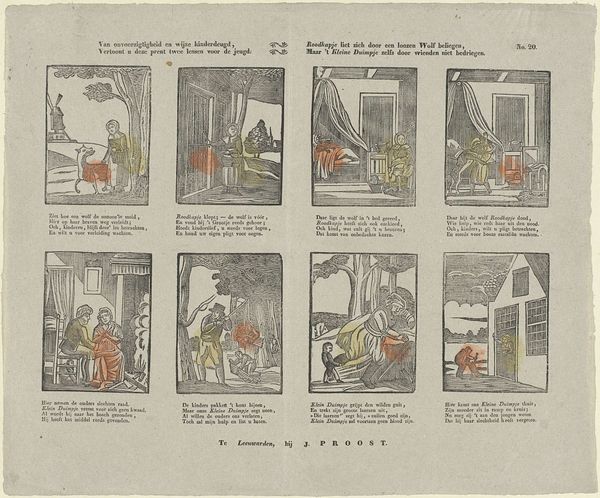
#
landscape illustration sketch
#
comic strip sketch
#
personal sketchbook
#
sketchwork
#
linocut print
#
ink drawing experimentation
#
pen work
#
sketchbook drawing
#
storyboard and sketchbook work
#
sketchbook art
Dimensions: height 433 mm, width 326 mm
Copyright: Rijks Museum: Open Domain
Editor: This is "Leven van Van Speijk," created sometime between 1833 and 1870, currently at the Rijksmuseum. It’s like a comic strip, almost, but it’s a series of images showing a narrative. It is hard to read; the colours are strange and there are many different scenes. How would you interpret this work, focusing on the use of imagery? Art Historian: Well, the sequential images do read like a comic strip or perhaps more accurately, a broadside. The colours - the application of blocks of pigment over black linework- remind me of early printed illustrations intended for wide distribution. Note how colour and line are divorced - consider the implications? Let's think about this Van Speijk fellow; do you know anything about him? Editor: I confess, I do not. Art Historian: Well, I think to unlock some of this artwork’s impact, we should understand Van Speijk’s symbolic significance in 19th-century Netherlands. He was a naval hero who blew up his own ship to prevent it from falling into enemy hands, becoming an instant martyr for Dutch nationalism. Editor: Oh, so this work is meant to celebrate him, to propagate a myth or collective memory! Art Historian: Exactly! Notice how the imagery reinforces this narrative? The initial scenes show his life leading to the heroic sacrifice, depicted in the final explosive panel. What feelings do these images and colours elicit in you? Editor: The simplified forms remind me a bit of folk art, very raw and unpolished, while the bold use of colours -green, yellow, red - may carry meanings I am unaware of! Now that I know the backstory, the layout also feels a bit like the stations of the cross! It has a redemptive feeling… Thanks for elucidating these cultural and symbolical layers! Art Historian: And thank you for your careful looking and for expanding my own understandings of cultural continuity! Now, the real work begins, tracing how and where these symbols reappear, evolve, and transform through generations...
Comments
No comments
Be the first to comment and join the conversation on the ultimate creative platform.
